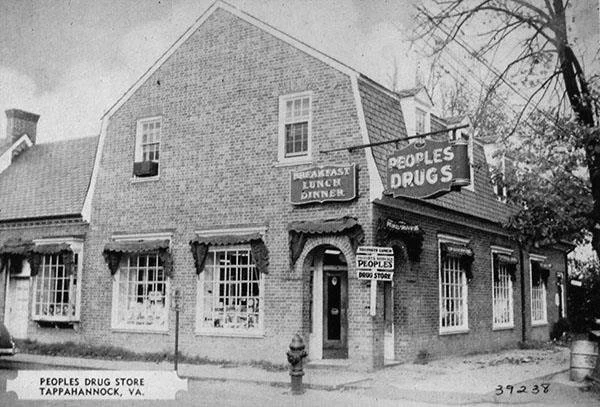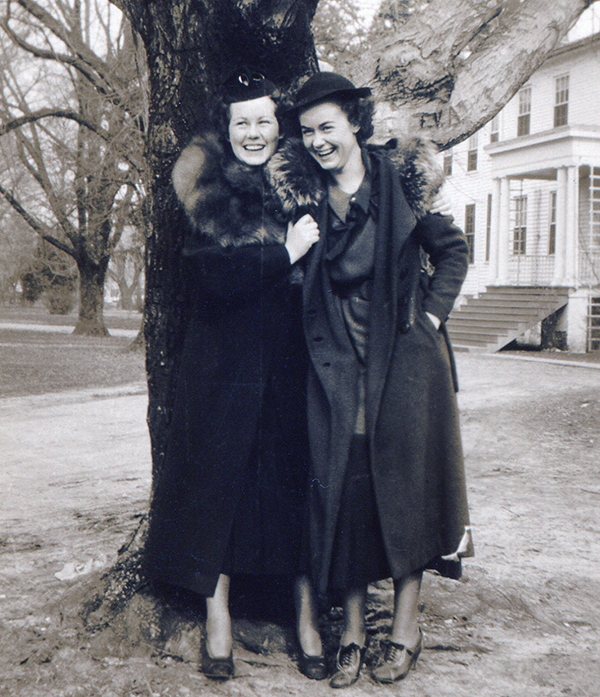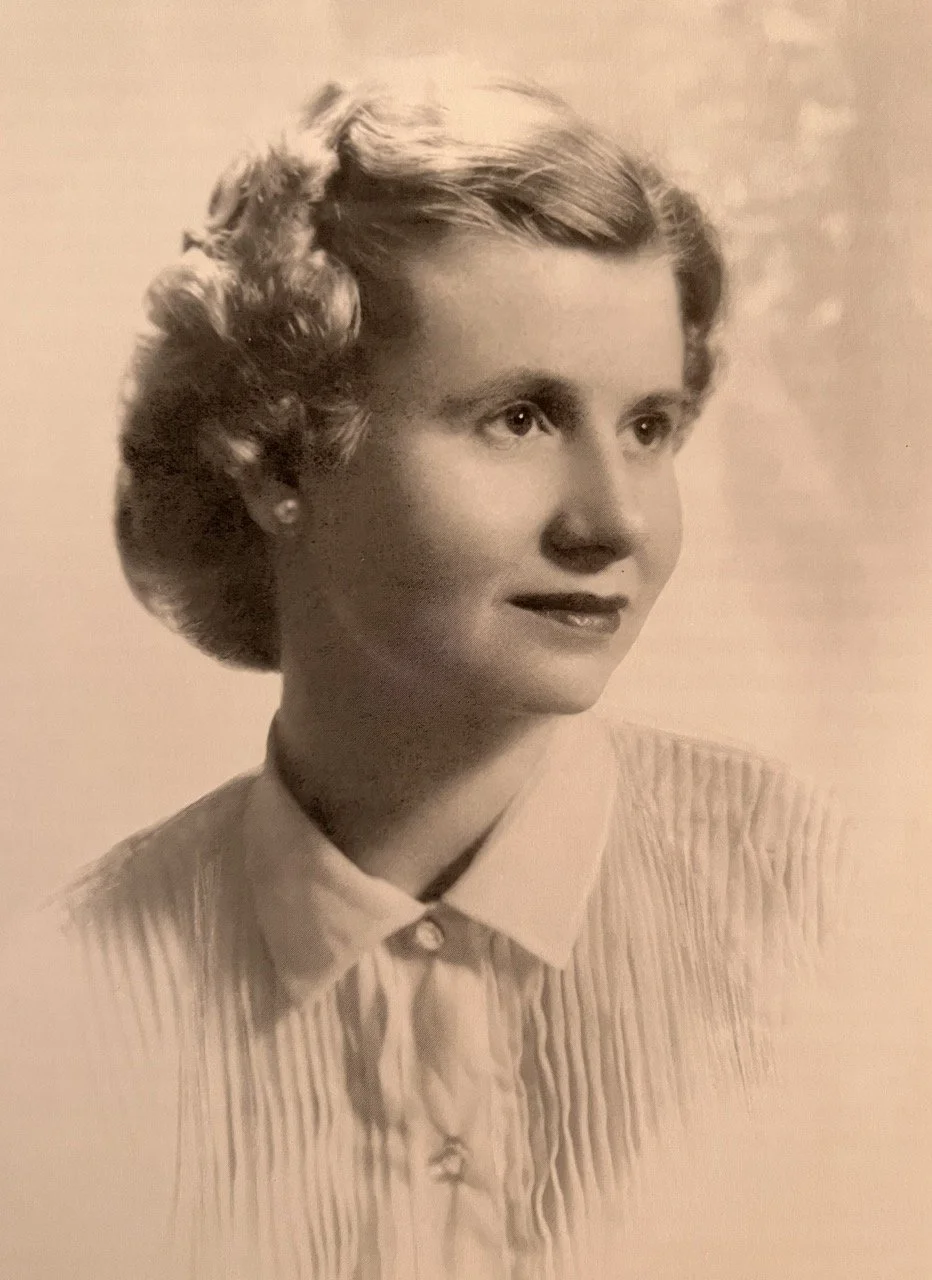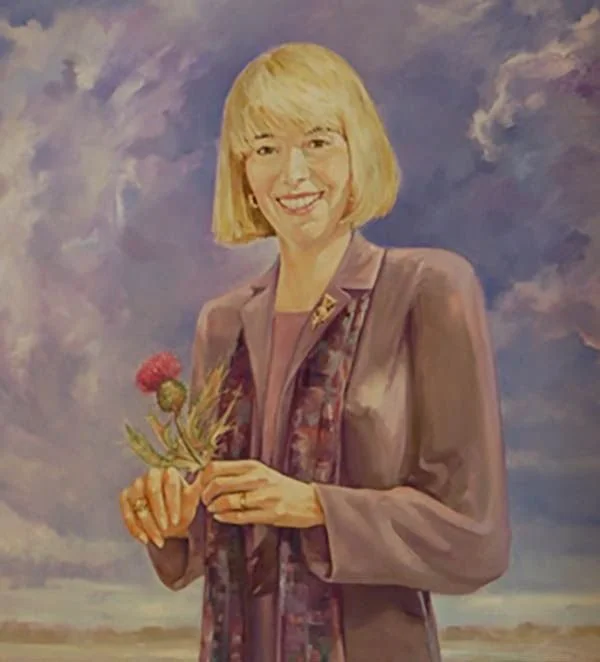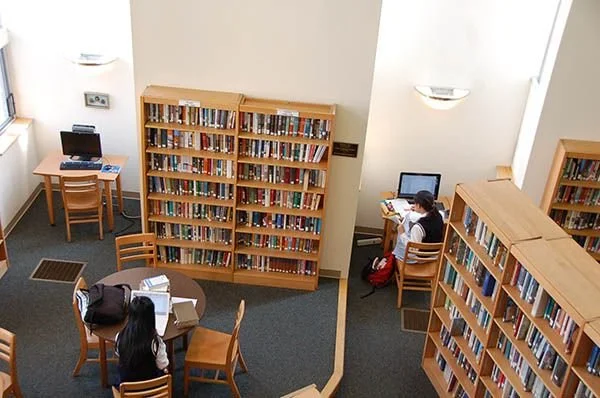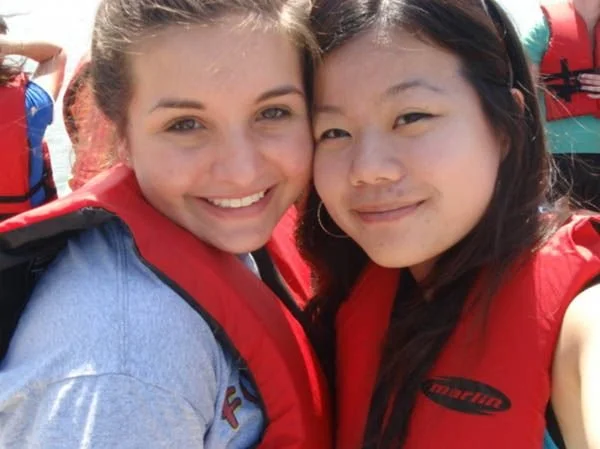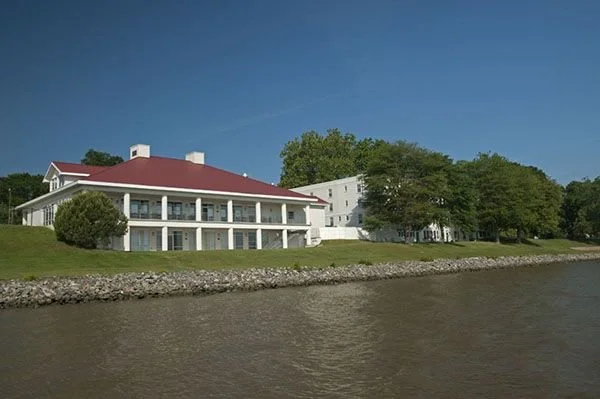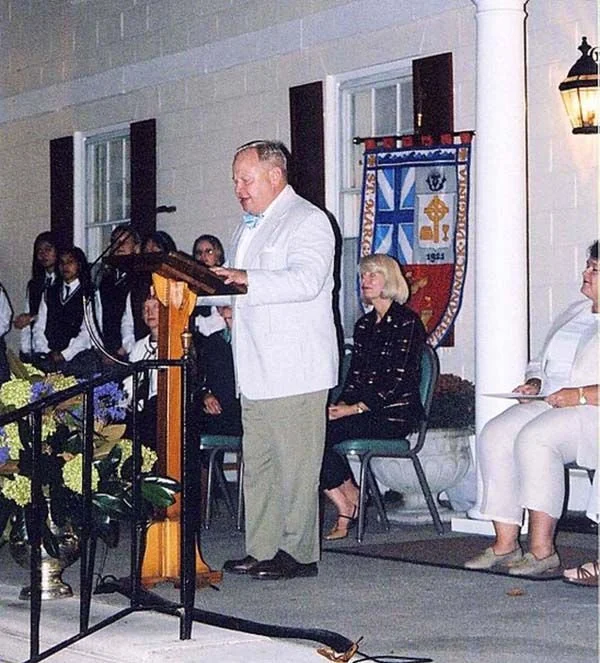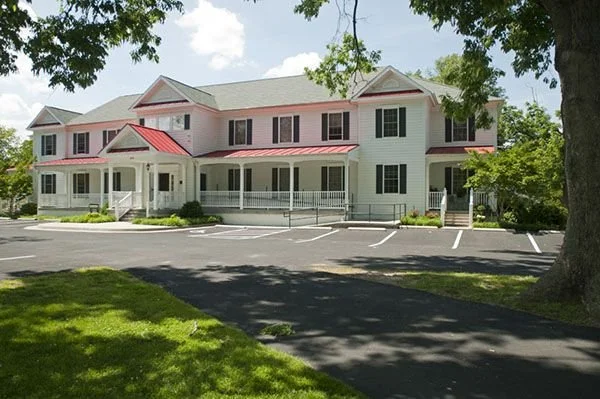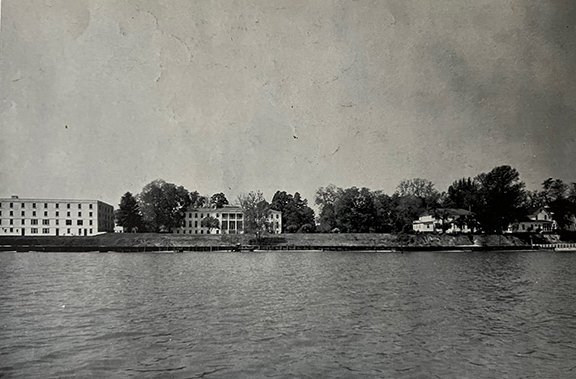
“St. Margaret’s instilled into us that there was a right and a wrong, and all our lives, we would have to make that choice, and our characters were built by the choices we made.”
Our History
At a time when opportunities for high school education were rare in the rural South, the Episcopal Diocese of Virginia established St. Margaret's School in Tappahannock. Its primary purpose was to "meet the need in Tidewater of a standard school, at the least possible cost, for girls of character and ability."
Back then, students often arrived by steamboat, as there was no bridge linking Tappahannock with the Northern Neck, and there was no government road to Richmond or easy way to reach a central metropolitan area like Washington, DC.
Follow the timeline below to see how far we've come since 1921.
A Brief History of St. Margaret’s School
St. Margaret's began, as most enduring institutions do, with a simple idea—the idea that Virginia's children deserve a quality education that equips them with the moral and spiritual foundation to carry them through their lives. An Episcopal network of schools was the dream of Bishop William Cabell Brown, and in 1919, it became a priority for the Episcopal Diocese of Virginia. And so it began. By 1920, the Episcopal Diocese of Virginia determined that two schools should be placed on the Northern Neck and Middle Peninsula. Thus, the search for two locations began: one for a boy's school and one for a girls' school.
Two locations were considered for the girls' school near Episcopal churches: one in Tappahannock and the other in Warsaw. In lobbying for the school to be placed in Tappahannock, the congregation of St. John's and other citizens wrote, "A Church School located in Tappahannock would have an advantage over any other point from the start in having the cordial sympathy and support of a strong local Church influence, there being five Episcopal churches in Essex County."
The charter trustees agreed and unanimously adopted the recommendation that a girls' school be located in Tappahannock on February 1, 1921. The school would be named "St. Margaret's School" on July 8 of that same year. Perhaps the historical significance of the place they had picked was unknown to them. The land on which Benjamin Goodrich established St. Margaret's stands on March 25, 1682, for 10,000 pounds of tobacco. In 1706, Harry Beverley mapped out the town lots and street names that are still used today. St. Margaret's original school building was known as the Gordon-Wright House and needed additions to house the school. Today, known as St. Margaret's Hall, the building was purchased to act as classrooms, the dining hall, a gymnasium, and a dormitory. Before 1850, the center portion was built by Dr. Thomas Gordon.
The property was purchased by Judge TRB Wright in 1876 and sold to the diocese in 1921 by his widow. The two wings were added in 1921 to accommodate the school. As the 1921 school year approached, it became apparent that the additions would take longer to finish. The school began its first term with 18 students, including four boys, in a room above Tom Cauthorne's drug store. St. Margaret's Hall doors would open in the spring term, which began in 1922.
The school's first Headmistress was Bertha Latané, who left a position as the head of the history department at Sophie Newcomb College to head the school. While well-liked by her students, she eventually returned to New Orleans at the end of the school year.
What followed was a string of headmistresses who chose not to stay for more than a few years for one reason or another. These included Emma Yerby (1922-1924), Laura Fowler McCall-Brockenbrough House (1924-1926), and Sarah Higginbotham (1926-1927). In the meantime, the school was expanding, and in 1923, the Cottage was built to house older girls.
Nancy Berry '23, the school's first graduate, remembers May Day and the school's first graduation ceremony. "I think May Day and graduation were the same day. Frances Burgwyn was chosen as May Queen, and she was quite lovely. I am sure Miss Yerby started May Day with the help of some of the interested teachers. I think practically everyone from Tappahannock came for the graduation exercise. I wore a white dress and carried lovely red roses my sister Mildred sent me from Washington D.C."
Nancy goes on to describe what her time at St. Margaret's taught her: "St. Margaret's instilled into us that there was a right. There was a wrong, and we would have to make that choice all our lives, and our characters were built by the choices we made."
In March 1927, the school would hire the first in a line of strong leaders, Edith Latané. During her 16 years as head of school, Miss Latané is credited with raising academic standards and leading the school to accreditation by the State Board of Education in 1936, increasing enrollment, expanding the physical facilities of the school, spearheading the acquisition of the McCall-Brockenbrough House and establishing the Honor Code in 1935; "Although these material improvements were outstanding, above everything else, she brought herself to the school. If one word could be selected to describe her, it should be 'Dignity.' For her, this embraced a deep sense of honor, a desire to learn, and a feeling of individual self-importance," states Gordon Lewis, Edith Latané's cousin and former Board of Governors chair.
With the acquisition of Brockenbrough House, the school deepened its connection to the history of Essex County and our nation. The Brockenbrough House has witnessed many of our nation's major events, even before its founding. The house was built on land purchased from Robert Beverly of Blandfield in 1763 by Archibald Mc-Call, a prominent Scottish merchant. In 1766, the house was the scene of a demonstration protesting the Stamp Act. Archibald's wife, Catherine Flood McCall, was pregnant with her young- est daughter, Catherine, at the time. Elder Catherine died in 1767, presumably due to the residual trauma of our Anderton House pre- and post-renovation protest. The younger Catherine and her sister were sent to England during the Revolutionary War. She returned to the United States and was admired by many suitors, most notably Robert Hunter and Joseph Hadfield from England. According to Hunter's diary, the men competed unsuccessfully for young Catherine's affections. Catherine never married and died in Georgetown on March 9, 1828.
It is with the McCall women that the legend of the Grey Lady was born. Some say that the Grey Lady is young Catherine, who was linked to an agent of McCall's who looked after his affairs while the family was detained in England. According to legend, McCall forbids marriage between the two. On the other hand, some believe that the legend of the Grey Lady began with the elder Catherine Flood McCall, whose death is blamed on the trauma she experienced along the banks of the river. We may never know the true identity of the Grey Lady, but her mystery continues to intrigue students to this day.
When Miss Latané resigned in 1943, the school tapped Rebecca Reinhardt Craighill to act as Headmistress. While her tenure would be short, her contributions to St. Margaret's traditions are still felt today.
A faculty member at St. Catherine's in Richmond, Mrs. Craighill moved to Tappahannock with her three children after being widowed six years earlier. Among her contributions is the creation of the school seal (1946), the Current yearbook (1945), the school's newspaper (1945), and the official class ring (1946), which students still wear today.
Jane Fillmore Hooker '47 wrote, "As these traditions and innovations be- came a part of the school, they brought with them cohesion and strengthened the morale of the school." According to Barbara Wiggin Gent, the English teacher who helped the senior class design the ring, the introduction of the class ring involved the use of creativity and research on the part of those who participated. In a letter, Mrs. Gent wrote, "Now about the St. Margaret's ring—and the shield's design. The Class of 1946 was 'my' class. I was its advisor. During their junior year, as they were dreaming about their last rites and ceremonies, they wished for a class ring that would become 'the school ring, an item that did not exist then. They wanted to start a tradition, and I still remember their excitement at the thought. With Mrs. Craighill's blessing, we went ahead. At first, there was some discussion about rings with stones versus those without plain gold rings, which might be worn more easily later in life. The latter won.
The second step was to determine that our patroness was St. Margaret of Scotland and learn what we could about her. Then, we had to choose among the possibilities for symbols for a church school dedicated to a Scottish lady. Having learned about her, we worked out the shield using the book and the chalice for her, the Celtic cross, and the thistle for the Church and Scotland. Besides, those four symbols worked nicely into the shield and made the jeweler happy. And we had a ring."
Only four years into her tenure as Headmistress, Mrs. Craighill was diagnosed with lymphoma and died before the end of the school year on April 26, 1947. "During her life, she continued to grow in grace; it is the school's loss and ours that she did not also grow in age, at the very least, to the biblical three score years and ten," Hooker said.
Despite all of this, St. Mar- garet's was still growing. Anderton House was purchased from the Andertons in 1947 for use as a dormitory. The original structure was built around 1760, about the same time as Brockenbrough House. Originally, the building served as a "prize house" for tobacco. A southern wing was added to the house in the 1890s.
After Mrs. Craighill's untimely death, Rebecca Brockenbrough returned from military service to fill the role of Headmistress. Miss Brockenbrough had been a member of the St. Margaret's staff off and on for two decades. She was known to many as a great lover of athletics. Frances P. Thorp '32 wrote in the 1983 Alumnae Bulletin, "From Miss Rebecca Brockenbrough, I learned not only how to play games, but the real meaning of good sportsmanship on and off the playing field." At the end of Miss Brockenbrough's tenure, the school brought in a woman whose employment would last more than 30 years.
When she took the position of Headmistress, Viola Hubbard Woolfolk was 27 years old, making her the youngest Headmistress in the country. By the end of her time at St. Margaret's, she would have the longest tenure of any head in the school system. Miss Woolfolk was placed in the position because the diocese thought that she could be re-absorbed into the system if the school failed.
Board Chair Gordon Lewis recommended Viola Woolfolk for the position of Headmistress in 1950. Incidentally, he is the son of the man who persuaded Edith Latané to take the position of Headmistress, former Board Chair James Meriweather Lewis. In the tradition of Edith Latané before her, Miss Woolfolk would re-energize St. Margaret's, so much so that by 1951, the school needed more space to house students.
In October 1954, ground was broken for Latané Hall. The building was completed and opened in 1955. At the time, Latané Hall served as the dormitory for the upper school and housed the infirmary, reception rooms, dining room and kitchen, and recreation room.
Miss Woolfolk began her career at St. Margaret's, living in one room in St. Margaret's Hall. She took care of many of the school's day-to-day details, including bed checks, meal planning, and chapel services.
Under her leadership, some of St. Margaret's best-loved teachers became a part of the community. Therna San- born. Frances "Gilly" Gilchrist. Hannah Mallory Perkins '40. Louise Velletri. Shannon Spears. Cathy Sgroi. Margaret Broad. These educators' classes have become synonymous with a St. Margaret's education. Many of them will attest that her example was significant to their professional growth. In 1987, Therna Sanborn wrote, "Her support, her intense interest and concern, her ability to listen, her good sense, her commitment to 'walk the last mile, with each and every one of us, student and staff alike, evoked a fierce loyalty to her and to St. Margaret's. She was a remarkable woman, an outstanding educator, and a good friend."
In 1983, after receiving a terminal diagnosis, Miss Woolfolk submitted her letter of resignation. In her farewell letter to alumnae, Miss Woolfolk wrote, "No one, no, no one has been as fortunate as I in the number of her daughters and who they are. I hope that you will not 'paint your unbroken slice of bread; that you will chew your chewing gum in private; that you will care for knowledge during all the days of your life; that you will deeply believe that only in giving will you receive."
Perhaps Miss Woolfolk's greatest achievements were the lives of the students she touched. In a letter dated January 22, 1986, Ann Rice Gray '65 wrote, "Your life has so much power for good in the lives of so many people. I wish there were a way to trace those threads of influence through the good works and best moments of all the girls you are a part of. There you are, in Tappahan- nock, Virginia, and there are bits of you operating for good all over everywhere. You are leaving something that is alive and growing and fine. I am grateful to be a part of it. I promise to try to make my part shine for you."
After Miss Woolfolk retired, the search for her replacement began. On St. Margaret's Day, 1984, the Reverend Paul Barthelemy began his ministry as the first headmaster of St. Margaret's School. While the St. Margaret's Day celebration began with Miss Woolfolk, Rev. Barthelemy adjusted the celebration to include traditional Scottish games and music. Rey. Barthelemy made other adjustments. He banned cigarettes and blue jeans on campus. His leadership included working with the Board of Governors to create policy goals reaffirming the school's mission and making firm commitments to faculty, programs, facilities, and fiscal policies. After five years of service to St. Margaret's, Rev. Barthelemy resigned, and the search for the school's next leader began.
In January 1989, the announcement that Margaret Robinson Broad would fill the role of Headmistress was made. At the time, Mrs. Broad had been working at St. Margaret's for nine years, first as a French teacher and department head; then, as the Academic Dean. On November 16, 1989, a celebratory service was held in Ball Memorial Gymnasium to celebrate the ministry of Mrs. Broad, St. Margaret's tenth head of school.
Under Mrs. Broad's leadership, St. Margaret's has seen exponential growth and opportunities for our students. Known as an intuitive leader and natural collaborator, Mrs. Broad has champi- oned many campus changes that include the building of the Viola Woolfolk Learning Center, the Louise Velletri Faculty Student Center, the Community/ Technology Center, McCuan House, the Athletic Complex, and the renovation of Latané Hall and Brockenbrough House. Mrs. Broad also led the way to revolutionizing campus programs. She spearheaded efforts to create the international, leadership, co-curriculum, and residential life programs and led the way to the expansion of the curriculum.
But perhaps her greatest accomplishment is her unwavering commitment to educating girls. A commitment that inspires them sparks self-discovery and teaches them they can be more than they ever thought. The girls and their educational experience are always at the forefront of her decision-making.
In 2009, when Margaret was celebrating her 20th year as head of school, former Board Chair Sarah Belle Eason Parrott '68 said, "Margaret is one of my closest friends. She wants each girl to realize her greatest potential and, at the same time, make the school a caring, compassionate place. She makes a real difference to all women with whom she interacts."
And now, we have reached 90 years. For all of its immeasurable contributions, our past is why we are all in this place today. At its center, St. Margaret's is and has always been a community of people who influence and support the girls in their care. From the teachers who carefully construct lesson plans, plan advisee birthday celebrations, coach sports teams, and give of themselves selflessly to the maintenance and housekeeping staff who are charged with making this campus a beautiful place to live. From the administrators who make tough choices and continually plan for the future to our Board of Governors who give their time and talent because they firmly believe in the mission of this school. All, past and present, have "dedicated their souls and their bodies to Thee and Thy service." This community of souls aims to make a difference in girls' lives.
And so it seems that after 90 years, we have come full circle. It is about empowering the girls to discover the women they will become, teaching them that they can achieve their highest potential and, in doing so, enrich the lives of others, giving them the moral and spiritual foundation that will allow them to grow in grace, and nurturing them so they unequivocally believe nothing is impossible with a little hard work and the right attitude.
Information for this article was gathered from personal interviews, letters, and past titles from The Thistle, The Thistledown, RiverViews, and John Page Williams' book, A History of the Church Schools in the Diocese of Virginia. Special thanks to Suzanne Derieux '77, Louise Velletri, Dale Harter, and David Broad for contributing to this article. Despite great care, we realize there is still room for error. Please direct corrections or omissions to the editor.
St. Margaret’s Hall, 1937
McCall-Brockenbrough House
Rebecca Brockenbrough (right) and a friend in 1935
Mail call in the pre-computer era
Anderton House pre-renovation, 1950s
Anderton House post-renovation, 1960s
Latané Hall under construction
Viola Woolfolk and a student
Field Hockey, 1970s
In 1989, Margaret R. Broad was installed as the tenth head of school.

